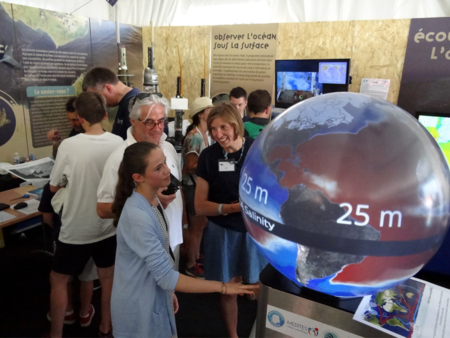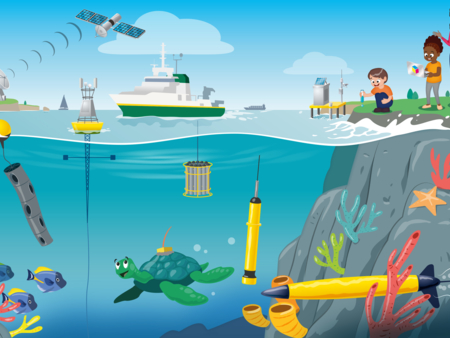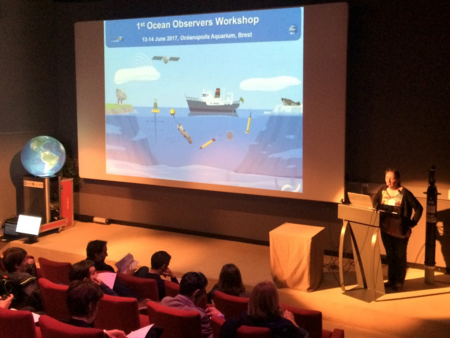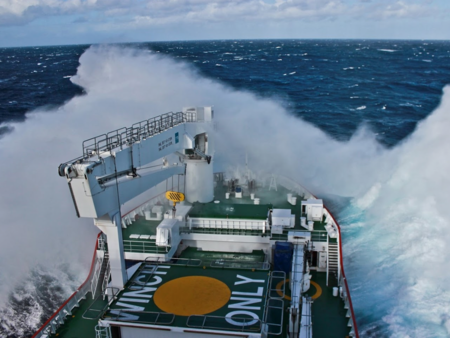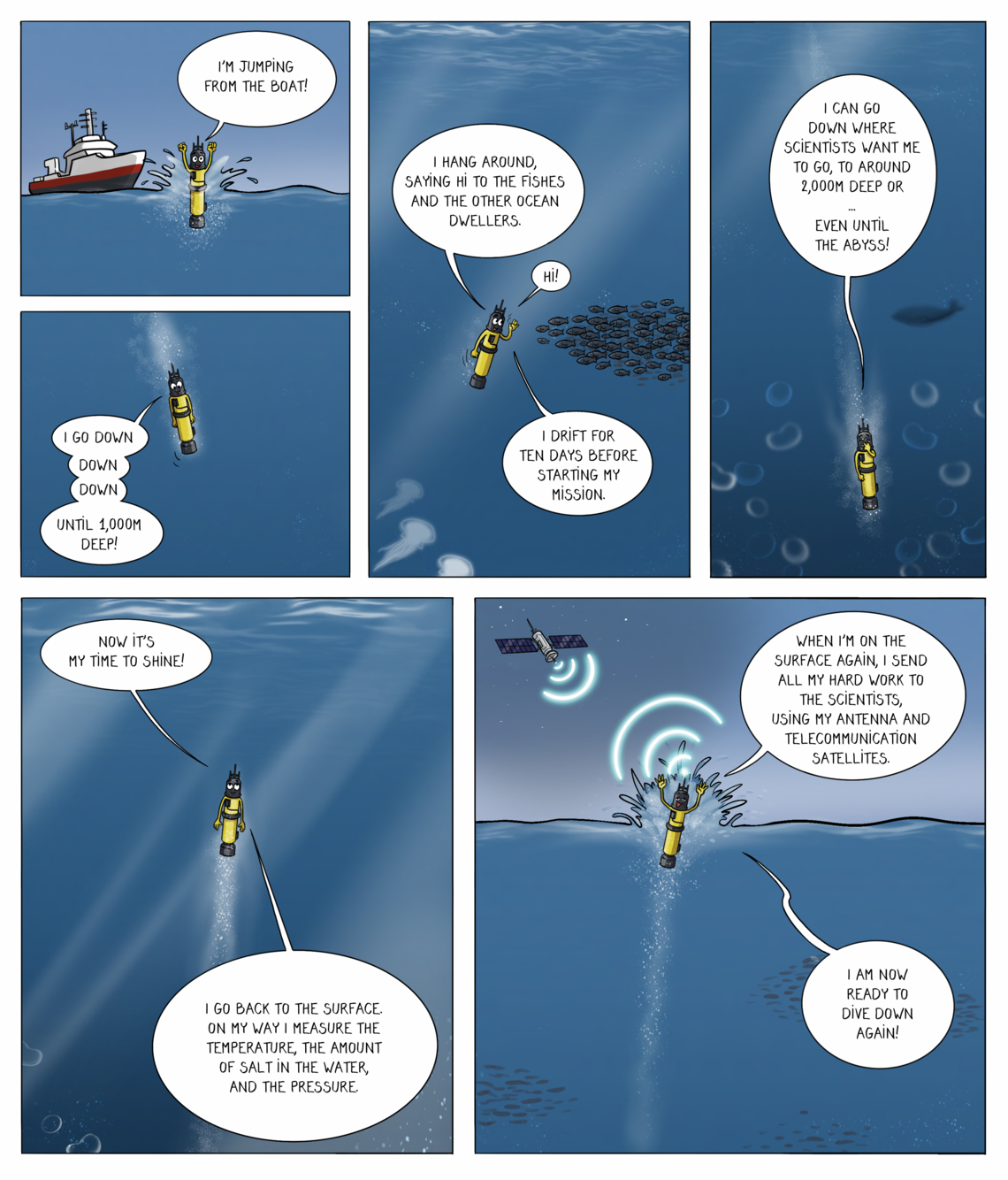Profiling floats - Argo
What is an Argo float?
Argo floats are autonomous ocean robots. They can't swim, but they can drift with currents, dive in the water column and get back to the surface. Each float dives vertically by inflating or deflating an external bladder to change its buoyancy, much in the same way fish do. Their mission is to collect observations in the open ocean. These observations are useful to better understand and predict what happens in the ocean and also to monitor the impact of climate change. They are deployed by sailors or scientists during campaigns at sea.
How does it work? A glimpse in the daily life of an Argo float
Once deployed in the sea, the float starts its mission by descending to a target depth of 1,000m.
There, it drifts freely with the currents, among passing sperm whales.
After 10 days, it descends again to its final chosen depth, generally 2,000m. The float will then go back up to the surface, all the while measuring the temperature, salinity (by measuring conductivity) and pressure in the water. This will allow scientists to establish a profile of the water column.
Salinity measures how much salt is present in the sea water.
Conductivity measures a material's ability to conduct an electric current. In the sea, it is linked to how much salt there is.
In the ocean, the water produces a certain amount of force on every object or living being inside it. It comes from the weight of water above and is called pressure. The deeper you go, the more water there is above you, the higher the pressure.
When the float reaches the surface, it transmits its observations to satellites, using its top antenna. It is then made available within 24 hours to scientists around the world. After that, the float is ready for another ten-day staycation at 1,000m.
After about 200 missions – around 5 years – the batteries are exhausted. The float then drifts and either sinks to the sea floor or is recovered.
What kind of ocean observations are collected?
- Temperature
- Conductivity -> Salinity
- Pressure
- Localisation > Ocean currents
In the last few years, Argo teams have developed two specific types of floats:
- the Deep float, which can dive down to 4,000 and 6,000m, to better understand important ocean changes, like how much heat the ocean is storing and how it evolves with climate change;
- the Biogeochemical float, with additional sensors to measure biological and chemical parameters in the water, to help understand the biological and chemical cycles in the ocean. These cycles are important for plankton productivity, the first step in the ocean food chain, and for keeping the ocean fit to live in for all its inhabitants.
Biogeochemical floats measure:
- Oxygen (O2)
- Nitrate (NO3⁻)
- pH
- Chlorophyll
- Suspended particles
- Light vs depth
What are the observations helping with?
Here are some examples of how the information gathered can be used.
Operational services
Argo floats provide information to operational services. These services can then improve weather forecast and climate predictions, especially early warnings for extreme events like hurricanes, cyclones, storms, etc.
Climate change
Argo floats help understand how the ocean stores the excess heat due to climate change. This contributes to understanding important phenomena like sea level rise and marine heat waves.
Ocean health
Excess heat in the ocean has consequences for all ocean dwellers. The Biogeochemistry floats also evaluate ecosystems health, for example by monitoring ocean acidification and deoxygenation. These two phenomena are threatening marine life by making it difficult to grow shells, or to breathe.
Where can we find it?
Argo floats are deployed everywhere, in the open ocean.
Argo key numbers
- Length: 1.10m
- Weight: Core float 20kg, Deep float 30kg, BCG 50 to 80kg
- Maximum depth at which it dives: 2,000m - Deep Argo 6,000m
- Number of floats at sea: 4,000
- Autonomy: 5 years (200 missions)
- Number of measures per mission: 1,000
- Number of countries involved in the project: 30
- Project starting year: 2000
Learn more about the Argo project
The profiling floats are part of the international Argo program, a major component of the Global Ocean Observing System (GOOS). The level of Argo international collaboration is unprecedented in the oceanographic community. About 30 nations are involved in this international observing effort.
The first Argo floats deployments date back to the 2000s and continue today at a rate of 800 to 1,000 deployments per year. Today, the Argo network counts almost 4,000 operational floats deployed in the global ocean. You can see it on the Argo story map.
If you want to learn more about this program, visit Argo international website and the Euro Argo educational website.

